It’s important to set reasonable and realistic SMART goals with kids, and encourage them by making their achievement visible.
My eyes are bigger than my stomach. This is especially true when I have ideas, or want to accomplish something. Suddenly, I find myself with a floor completely covered with quilting scraps, a refrigerator full of expiring vegetables, and I wonder what in the world I thought I was going to DO with ten bags of organic carrots! (Good thing carrots have a long shelf life!).
I tend to overdo New Year’s Resolutions too. Something about a fresh calendar with all those boxes neatly waiting to be filled in. I itch to fill them right up with good things! Sometimes I pack my life so tight with goals and plans, I forget God has His Way of filling in those boxes (not to mention the unexpectedness of life-in-general, like trips to the urgent care, or finding mold in the bathroom!).
I am fortunate my husband is my safety net when I can’t clean my proverbial plate. He’s always there to tackle extra chores, feed the kids, or keep the laundry cycling while I try to make sense of my over-reaching goals.
How to make achievement visible and tangible for kids
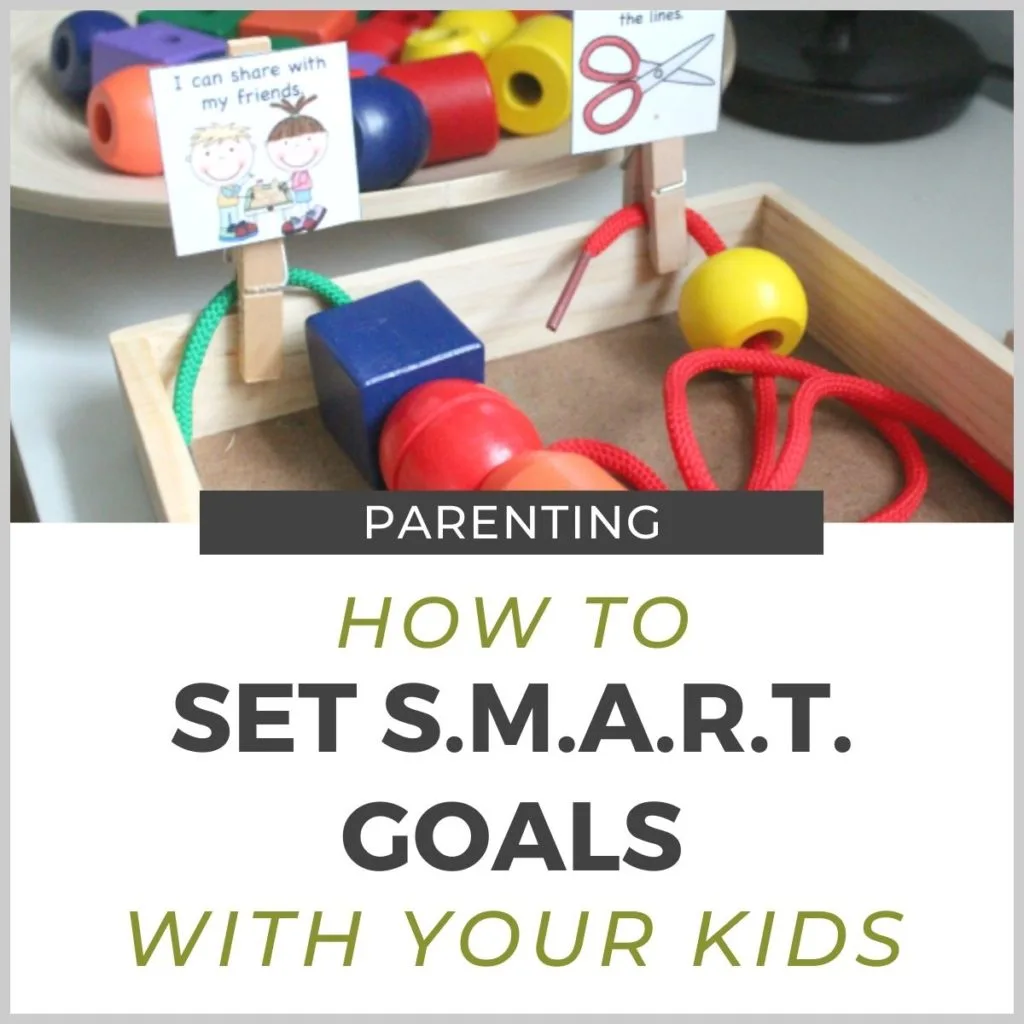
We do the same thing with kids, too. From birth, we cheer when our kids reach milestones like walking and talking-although they aren’t aware this was “the goal,” they are just developing naturally. As they grow, we encourage them to meet milestones or goals that are more self-directed (and sometimes, parent-directed).
The trouble is, kids often aren’t ready to make the leap from the concrete version of their life to meeting intangible goals. This can lead kids to become defeated or get discouraged and give up.
Teaching kids to set goals and achieve them can be a delicate balancing act. I want my children to reach for the stars… but I don’t want them to be discouraged by thinking they aren’t making progress if a goal ends up being harder or taking longer than anticipated.
So it’s important to make reasonable and realistic goals for kids. And, we must also encourage them along the way by making their achievement visible. Even adults benefit and enjoy all kinds of goal tracking systems, from large thermometers that show fundraising efforts, to apps that record our workouts and send us digital badges as we grow!
1. Set SMART goals with kids
Have you heard of the acronym SMART goals? Here’s what it means to set S.M.A.R.T goals with your kids:
S – Specific
Not “eat healthier,” but instead naming a specific way to accomplish this goal: “buy organic vegetables.”
Terms like “less,” “more,” “-er” and “better” probably shouldn’t be part of your goal because it is hard to know if you met that indefinite goal.
M – Measurable
Assign a number – this is how you can measure progress.
A – Achievable
I can’t pay off my mortgage in a year, but maybe I can make an extra payment this year? Make the goal do-able, and you’ll be more likely to work towards it!
R – Relevant
Does this goal fit your family values? If you treasure being outside more, does the goal support that value?
T – Time-based
Set a due date (or time-frame for habit-building), and set a check-in date midway through so you can adjust along the way. Give enough time to finish the objective, but not so much that you get lax and keep postponing. Spreading “due dates” through the year keeps stress down.
(See other variations of the SMART acronym here.)
2. Make SMART goals visible for kids
The SMART goal framework fits children well, because it means goals have to be visible. My children respond well to visual cues and reminders, as well as visual encouragement.
In our house, we start by creating a picture of the goal – whether that’s drawing a picture, printing out some clipart, or even taking a photo of the task.
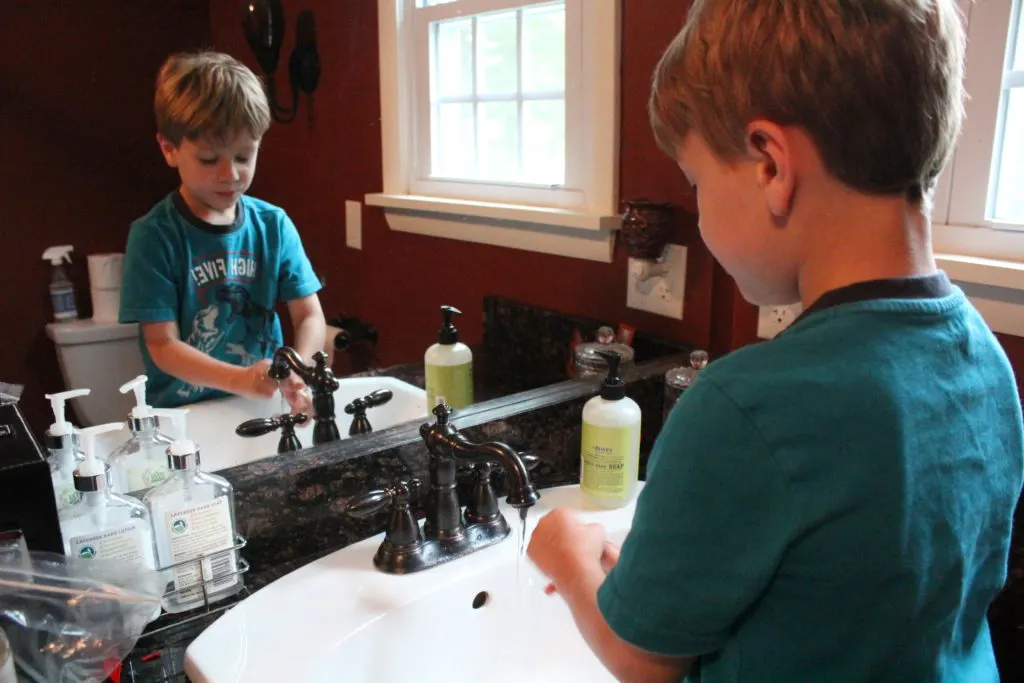
One year, a major goal I had for the boys was hand-washing! Yes, kids always need reminders to wash their hands! We “measured” this goal by counting how many times a day they need to wash their hands (at minimum!).
To track progress visually, I’ve used a variety of methods from 30 day checkbox charts, to pom-pom balls in a jar. My boys enjoyed stringing beads for each goal activity completed. It’s so simple and they look forward to getting another bead to add to their string.
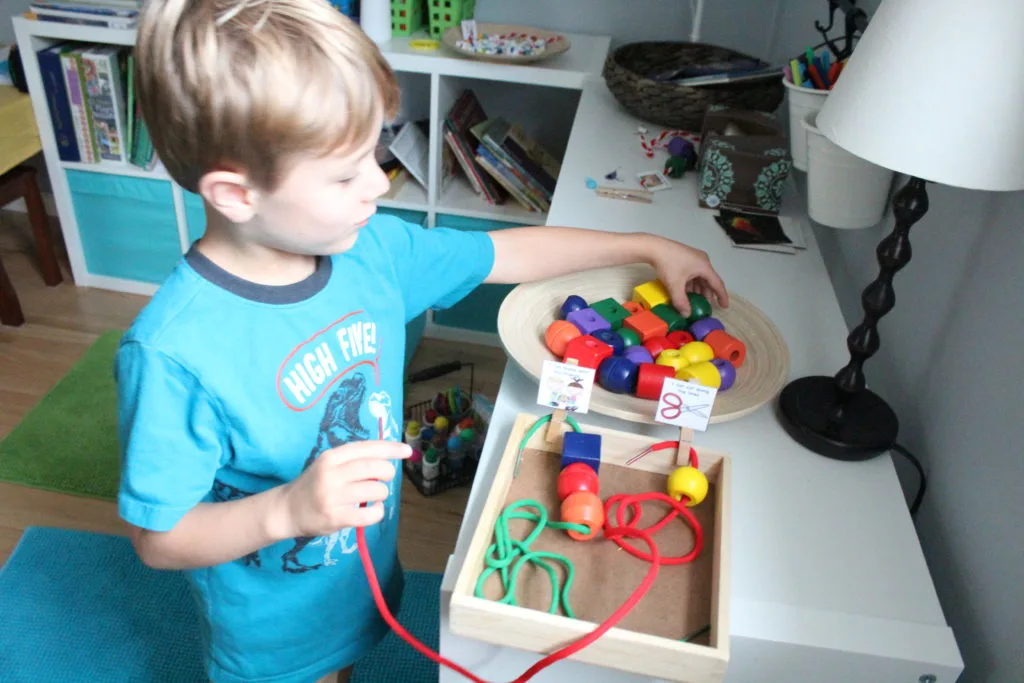
A bowl of wooden beads (smaller for my older kids, larger for toddlers & preschoolers) with pipe cleaner or shoelaces for stringing is a great tool. Keep these beads in a spot for the your kids to track their achievement. Clothespins can easily hold a visual of the activity in place while children are working on that goal.
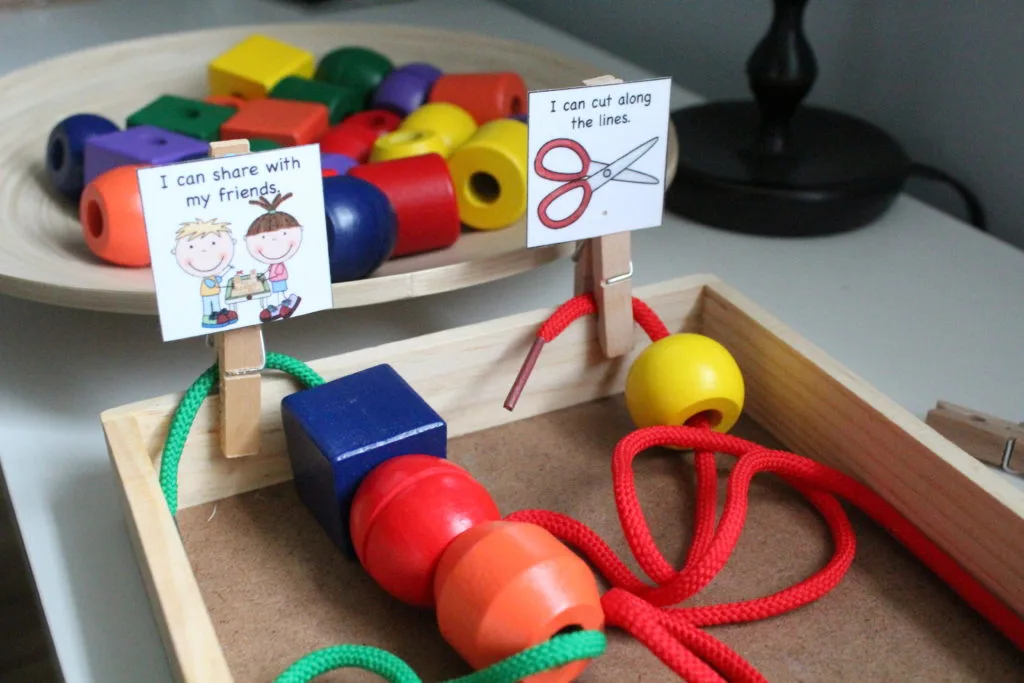
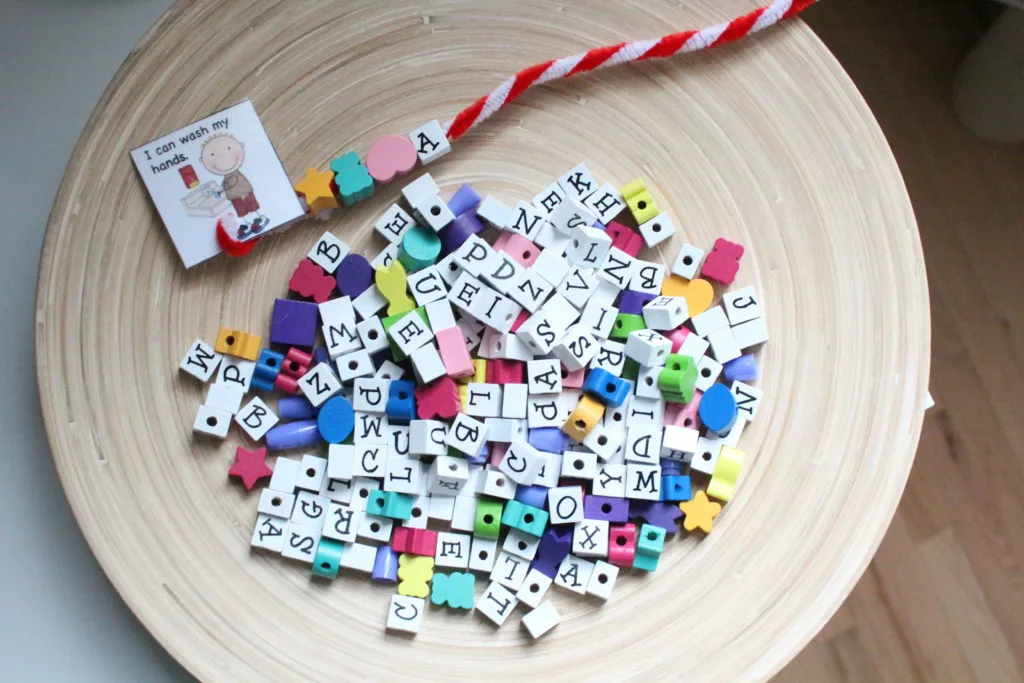
The boys love getting to run and choose a bead to add each time they complete a task. I love that I am not doling out candy all the time, and they also get this short fine motor skill activity working with the beads throughout the day.
You could use an abacus for goals that have many actions that get repeated daily – simply slide the beads back to start over each day!
3. Keep track of time to keep momentum
When it comes to the time-based aspect of setting goals, a real or play clock or calendar can be handy to help children visualize passage of time and check how often they are working on or completing goal tasks.
Check off the days on a calendar each time kids complete a goal task. Or have an alarm set on a clock to remind kids to work on their goals.
4. Celebrate small wins as achievements stack up!
So whether you’re setting a goal for personal care (tying shoes, dressing oneself), social skills (calming self down, sharing with friends), or learning (count to 50, tell time), test it against the SMART goals list. Then use visual cues like beads or checklists and time reminders so children can stay focused and see those achievements really stack up!
When you reflect on your goals at the end of the year, you might note that you didn’t achieve them all. That is okay! Take note of the progress made on each goal, and set new goals to finish projects, or re-evaluate whether the goal is appropriate for the next year. All progress is a step in the right direction.
The whole point is to make progress and celebrate small wins. By crafting SMARTer goals, we have found our success are tangible, visible, and easier to accomplish.
What resolutions or goals do you have for the new year? Will you set SMART goals with your kids to help you achieve them?
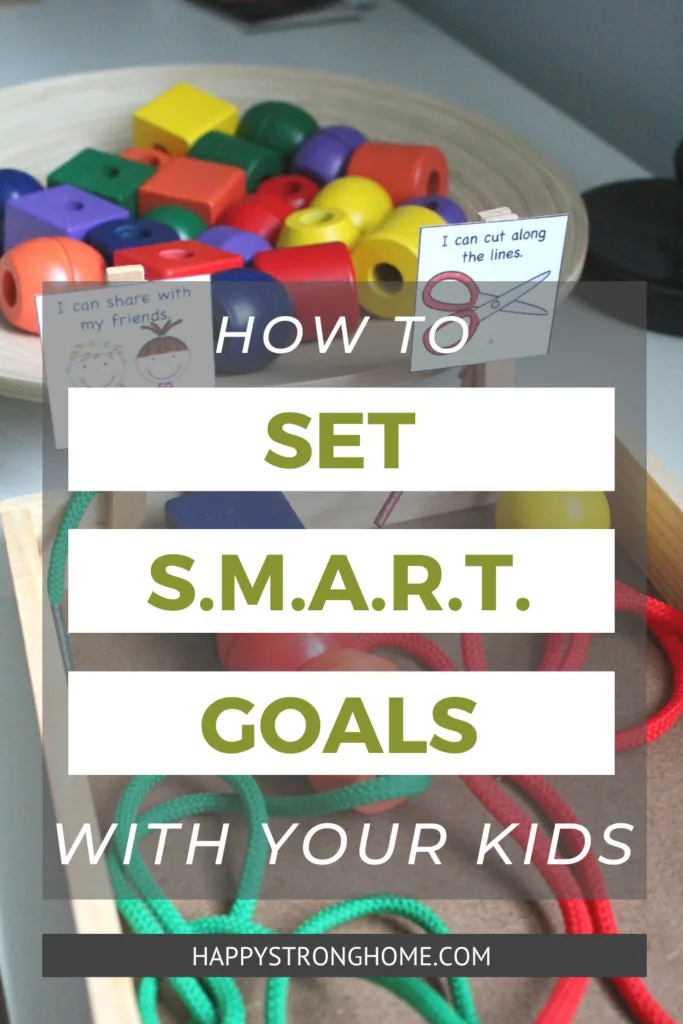
See similar posts:
Goal setting printables for kids
Big Life Journal growth mindset tools
As an Amazon Affiliate, I earn from qualifying purchases. All opinions are my own.


Honey Onion Syrup – Natural Cold Remedy
Wednesday 7th of January 2015
[…] I know, I know, the teacher in me says, “That’s not a SMART goal, Julie!” But don’t worry, hubby and I also sat down and written out in specific […]
T Rex Mom
Thursday 30th of December 2010
Good tips while I am working on devising my goals. Interesting, though, my goals are often the same each year just maybe a little more detailed and specific.